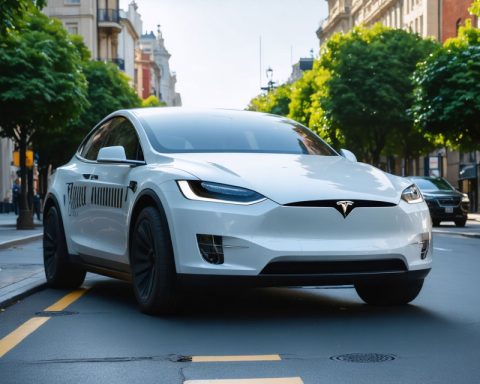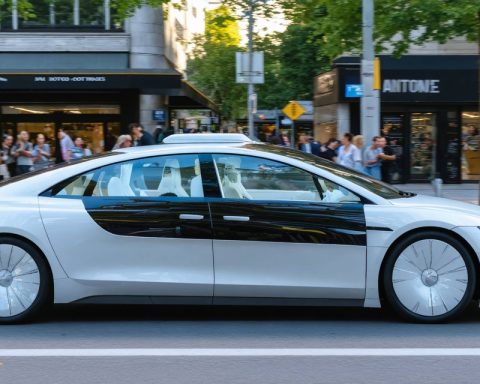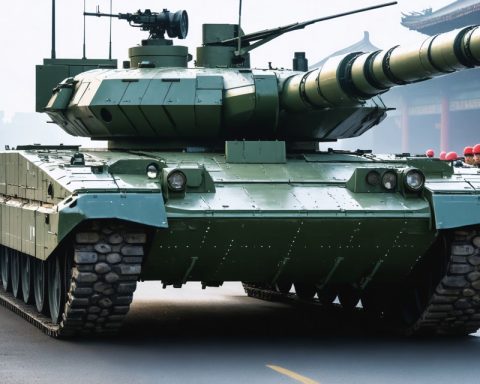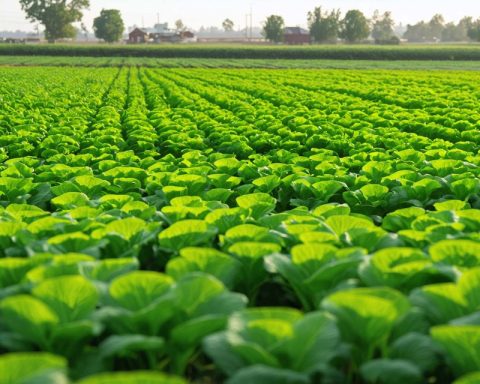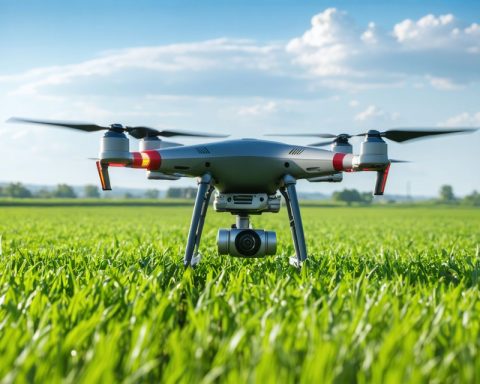- Autonomous vehicles are transforming traditional farming methods, boosting agricultural productivity with driverless tractors and drones.
- The integration of GPS, sensors, and AI enhances planting and harvesting processes, leading to increased yields and reduced labor costs.
- The shift towards automation in agriculture promotes sustainability by optimizing resource use, minimizing waste, and making data-driven decisions.
- Challenges include infrastructure demands, labor model disruptions, data security concerns, and high initial costs.
- Successful adoption of autonomous technologies promises enhanced food safety and security globally, balancing tradition with innovation.
Golden fields stretch endlessly under the sun, a classic symbol of rural tranquility. Yet, today’s farms pulse with innovation thanks to the rise of autonomous vehicles, ushering in a new era of agricultural productivity. Imagine a fleet of driverless tractors deftly plowing fields, optimizing each furrow with precision unseen in human hands. This vision isn’t distant—the agricultural landscape is being quietly transformed, leaving an indelible mark on the world’s oldest industry.
Traditionally, farming relied heavily on skilled labor operating complex machinery from dawn till dusk. However, the development and deployment of autonomous vehicles are redefining what’s possible. These cutting-edge machines navigate through crops with GPS specificity, planting and harvesting with unparalleled efficiency. The result? Increased yields and reduced labor costs, cultivating a future where technology and tradition merge seamlessly.
The pivot towards automation offers significant environmental benefits too. Autonomous tractors and drones equipped with sensors and AI-driven analytics can tailor fertilizer and water use, minimizing waste and promoting sustainable practices. Fields become laboratories where data-driven decisions replace guesswork, addressing the challenges of modern agriculture head-on.
Yet, while the potential is thrilling, concerns echo around corners of the digital pasture. The integration of such technology demands robust infrastructure and disrupts current labor models. Farmers worry about data security, regulatory frameworks, and the high upfront costs associated with a tech-driven transformation—a digital divide threatening to grow wider still.
Despite these daunting hurdles, the promise of autonomous vehicles in agriculture is profound. Faster, smarter farming techniques can significantly enhance food safety and security worldwide. Embracing this innovation means harnessing technology to face tomorrow’s challenges today, ensuring that our growing global population is fed sustainably.
The future of farming may well depend on how swiftly and effectively these autonomous solutions are adopted universally. By striving for a balance between tradition and innovation, the agriculture industry stands on the cusp of a revolution—one that respects the past while eagerly racing towards a brighter, greener future.
Autonomous Vehicles: Revolutionizing Agriculture for a Sustainable Future
The Promise of Autonomous Agricultural Vehicles
Autonomous vehicles in farming are transforming traditional agriculture. These innovations have numerous facets extending beyond what was initially discussed.
More Than Just Tractors: Diverse Applications
Autonomous vehicles in agriculture are not limited to driverless tractors. From drones equipped with multispectral cameras analyzing crop health to autonomous harvesters picking fruits with precision, the range of applications is vast. This technology facilitates 24/7 operations, never tiring or needing breaks like human laborers do.
How to Integrate Autonomous Vehicles in Your Farm
1. Assessment: Evaluate your farm’s specific needs, considering the size, type of crops, and existing machinery.
2. Research: Investigate available technologies and select solutions best suited for your operations.
3. Training: Invest in training for current staff on how to operate and maintain this new technology, ensuring a smooth transition.
4. Pilot Program: Start with a small section of your farm to test the new technology and assess productivity and reliability before a full-scale deployment.
5. Scale Up: Based on initial success, systematically expand to other farm sections.
Real-World Use Cases and Market Trends
– Case Study: In California, wineries are using autonomous vehicles to monitor vineyard conditions, allowing for precision irrigation and targeted pest control, significantly reducing water and chemical usage.
– Market Forecast: The global agricultural autonomous vehicle market is expected to grow significantly, as per a recent report by MarketsandMarkets, driven by the increasing need for precision agriculture and the labor shortage in the farming industry.
– Industry Leaders: Companies like John Deere and Kubota are pioneers, investing heavily in R&D to develop reliable and versatile tools.
Pros and Cons
Pros:
– Increased Efficiency: Optimizes operations with precise GPS technology.
– Reduced Labor Costs: Less reliance on human labor, reducing overheads.
– Environmental Benefits: Enhances resource usage efficiency and promotes sustainable practices.
Cons:
– High Initial Cost: The upfront investment can be prohibitive for small-scale farmers.
– Data Security Risks: Potential vulnerabilities in data management could lead to breaches.
– Regulatory Challenges: Varied regulations across regions can complicate deployment.
Addressing Concerns and Limitations
– Security Measures: Implement robust cybersecurity frameworks to protect sensitive farm data.
– Government Policies: Advocacy for supportive policies and subsidies can help farmers overcome cost barriers.
– Training Programs: Establish partnerships with educational institutions for training farmers on technology adoption.
Conclusion: Preparing for the Future of Farming
By blending tradition with innovation, autonomous vehicles pave the way for a more efficient, productive, and sustainable agricultural future. Farmers should carefully assess their unique needs and leverage technology to enhance productivity while minimizing environmental impact.
For comprehensive insights on new agricultural technologies, visit John Deere and Kubota to explore their latest innovations.
Quick Tips:
– Stay Informed: Regularly update your knowledge on the latest technological advancements.
– Network: Connect with other farmers and industry experts to share experiences and insights.
– Start Small: Test new technologies on a small scale before committing to full implementation.
Embrace the future of farming by integrating autonomous vehicles gradually, ensuring a sustainable and innovative approach to agriculture that honors both past traditions and future potential.



